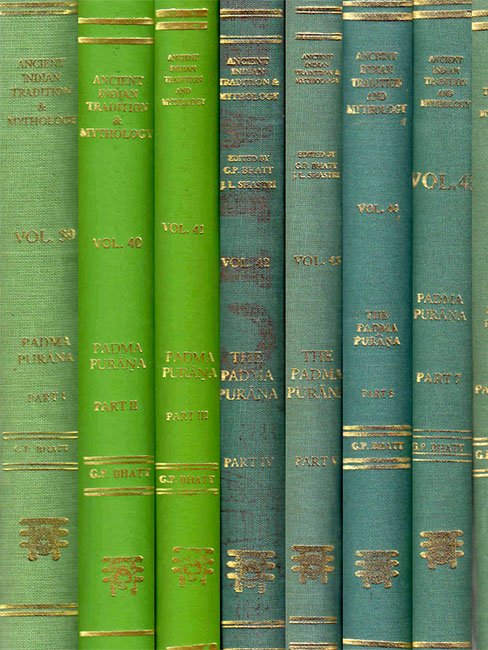The Skanda Purana
by G. V. Tagare | 1950 | 2,545,880 words
This page describes Efficacy of the Worship of Someshvara which is chapter 30 of the English translation of the Skanda Purana, the largest of the eighteen Mahapuranas, preserving the ancient Indian society and Hindu traditions in an encyclopedic format, detailling on topics such as dharma (virtous lifestyle), cosmogony (creation of the universe), mythology (itihasa), genealogy (vamsha) etc. This is the thirtieth chapter of the Prabhasa-kshetra-mahatmya of the Prabhasa Khanda of the Skanda Purana.
Chapter 30 - Efficacy of the Worship of Someśvara
[Sanskrit text for this chapter is available]
The Devī said:
1. Which is the deity to be worshipped first after taking bath in the Agni Tīrthas? O Lord of Suras, it behoves you to explain the procedure of the pilgrimage whereby it shall be free from obstacles.
Īśvara said.:
2-3. After duly taking the holy bath, offering the Arghya in the great ocean and worshipping it with scented flowers, garments and floral unguents, the pilgrim should cast into it a golden bracelet in accordance with his capacity. Then he should offer libations to the Pitṛs and go to Lord Kapardin.
4. After devoutly worshipping with flowers, incense, scents and garments, the pilgrim should offer Arghya uttering the Mantra: “gaṇānām tvā” (RV.II.23.11) etc.
5. For Śūdras, O goddess of Devas, the Mantra prescribed by the Smṛti is the eight-syllabled one. There he should go to the greatest sin-destroying deity Someśvara.
6. After bathing (the deity) duly, he should perform the Japa of Śatarudriya, the Rudra Mantras with five Aṅgas and the other Rudra Saṃhitās.
7. The bathing should be done with milk and curds mixed with ghee. Then the deity is smeared with honey, sugarcane juice and Kuṃkuma (saffron).
8. Thereafter, the adorable one is adored with sweet scents and sandal-paste, along with musk mixed with camphor and Uśīra (fragrant root of a plant).
9. The Lord is fumigated with different kinds of incense and duly wrapped with garments. Then the excellent Naivedya (food offerings) should be offered.
10. Then Ārārtika (waving of light—Āratī) is performed. There should be a dancing programme as the devotee wishes. The deity is bowed down to in the Aṣṭāṅga manner (so that the eight limbs of the body touch the ground) and vocal and instrumental music follows.
11-13. A show should be arranged in front of the Lord, along with discourses on Dharma, and charitable gifts are then distributed in keeping with the financial capacity of the devotee, among the Brāhmaṇas, ascetics, the disabled, wretched ones, blind people, miserable ones and pilgrims. If a ruthless act (e.g. bloody sacrifice) is intended to be begun (?pravṛtte krūrakarmaṇi), a bull is to be offered. Then, O beautiful woman, the devotee undertakes fast for that day. For one full year, men of devout nature should observe fast on that lunar day, on which they first visited Someśvara.
14. By so doing with devotion, the man derives the fruit of his birth. In addition he acquires the entire benefit of pilgrimage to all the Tīrthas.
15-17. O beautiful woman, he redeems all the ancestors in the father’s and mother’s line. By visiting Someśvara, a man washes off all the sins committed during childhood, youth and old age. After viewing Lord Someśvara, no wretched, miserable or impoverished child is born in his family in seven generations. The devotee is reborn in a well-reputed family richly endowed with wealth and food-grains.
18. He will again have devotion towards Lord Somanātha further increased. The bathing is carried at the outset with milk and then by means of a continuous current (of water).
19-20. During the first Yāma, this takes place and the Mahāsnāna (great ablution at midday) thereafter. Men who view this Mahāsnāna of the Lord of Devas at midday and the Ārārtika at dusk are not reborn. O lady of excellent countenance, considering the terrible nature of Kaliyuga with sins in plenty, it must be asserted that no man (will) avert wretchedness and misery by any other rite.
